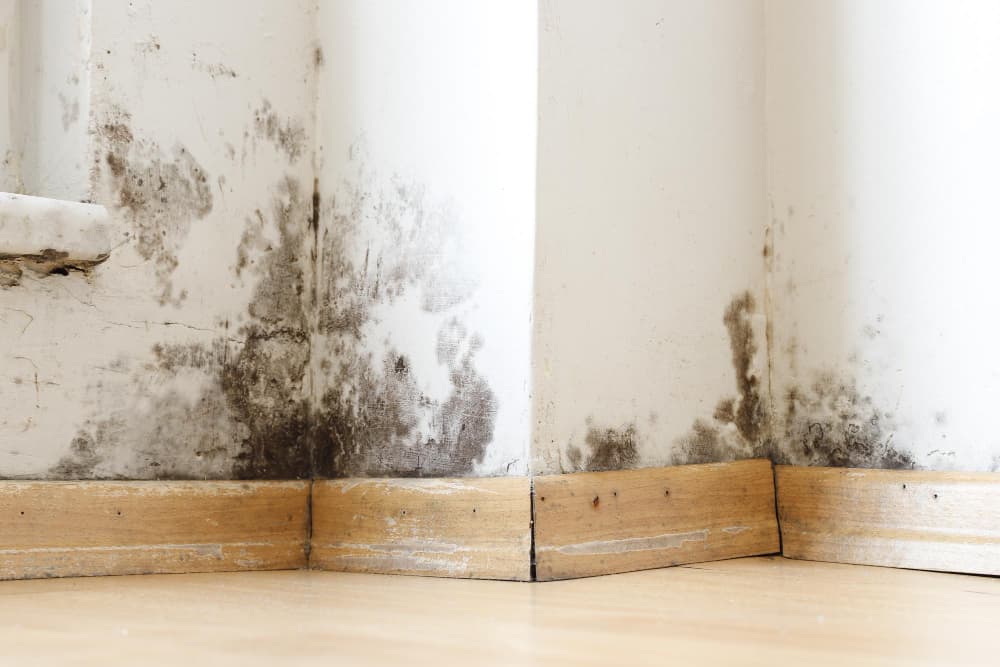
Knowing how to eliminate moisture that rises from the ground is not easy: today we will provide you with all the information to better protect your home.
Dealing with moisture rising from the ground is a common problem in many homes.
This situation, if not handled properly, can lead to major problems such as mold and structural damage.
Next, we will explore the most effective techniques for removing moisture from the soil. effectively.
Methods to remove moisture that rises from the ground
Assessment of the situation
To effectively address the humidity problem first identify its origin. Inspect your home Look for signs of external leaks, such as water stains on walls or floors, and check for broken pipes or leaks in plumbing systems.
Uses a hygrometer to measure humidity levels in different areas and determine whether problems are local or more widespread.
Avoid the common mistake of treating all moisture problems the same; Each situation requires a specific approach.
Improve exterior drainage
Inadequate exterior drainage can be a major cause of moisture. Make sure the ground around your house has a suitable slope to keep water away from the base.
Consider installing French ditches or drains which are trenches filled with gravel or rock that redirect water away from your home.
Make sure the drains and gutters are clean and free of obstructions to prevent water backflow. A common mistake is ignoring regular maintenance of these systems, which can lead to moisture problems.
Use of moisture barriers
In areas prone to rising damp, such as basements or ground-level homes, install a vapor barrier it’s crucial.
Choose materials such as thick plastic sheets or rubber, and make sure they are tightly sealed and cover the entire affected area. These barriers prevent soil moisture from infiltrating living spaces.
A common mistake is not completely covering the area, which reduces the effectiveness of the barrier.
Sealing and insulation
Effective sealing of cracks and fissures is essential to prevent moisture ingress. Uses specific sealants and putties for different surfaces and make sure you apply them correctly.
Furthermore, consider the wall and floor insulation to create an additional moisture barrier.
Isolation also contributes to energy efficiency, reducing heating and cooling bills. A common mistake is using low-quality sealants that deteriorate quickly.
Adequate ventilation
maintain a good ventilation is key, especially in areas like basements and bathrooms. Install extractor fans and consider using dehumidifiers in areas with high humidity.
Make sure your home has enough points of crossed ventilation to allow proper air flow.
A common mistake is a lack of ventilation, especially in enclosed areas, which can exacerbate humidity problems.
Engineering solutions
For severe cases of humidity, where conventional solutions are not sufficient, they may be necessary engineering solutions.
This may include installing sump pumps to eliminate accumulated water in areas such as basements, or the implementation of underground drainage systems to better manage water around the home’s foundation.
These solutions require careful evaluation and planning, and are often best left to professionals.
Regular maintenance
Regular maintenance is essential to prevent the recurrence of moisture problems.
This includes regularly clean drains and gutters, check the pipes Check for leaks and make sure your home’s drainage system is working properly.
A regular home inspection can help you quickly identify and address any problems before they become larger issues.
A common problem you can solve
Removing moisture that rises from the ground requires a methodical approach and sometimes the implementation of various techniques.
From improving exterior drainage to using moisture barriers and proper ventilation, every step is crucial to protecting your home from moisture damage.
In extreme cases, professional intervention may be necessary to ensure your home remains dry and safe.







